|
Uploaded: 10/9/2003 4:39:20 PM Categories: Physical Models |
Anti Staircase
Second year studio introduces abstract, theoretical organizational concepts; space, form, function, and the resolution of materials and structural systems. How do we perceive space? What are the relationships between space and form? Is space something to be designed, and if so, what are the factors dictating the design of space? These are the questions second year students learn to answer. In the staircase project students were asked to design a staircase that resists its own terminus. I saw this project as more of a kaleidoscope than a staircase. Each student made a model about the size of a telescope and would be constantly sticking their face up to it in order to look around inside. Our assumption: the more engaging the things you see, the more drawn you might be to look from side to side, and thus the less likely you are to continue traversing the staircase (looking down the telescope) in favor of enjoying the space around the staircase (like the patterns hiding the mirror’s seams inside a kaleidoscope. It is important to note that this project never really took on a sense of architectural scale. The object made was the object viewed, and never translated well into actual human proportions. So there again, the device like quality of the anti-staircase shows up. With its in-hand quality understood, I designed a holder to float the contraption off the ground. You walk over, slide the thing out of its holster, and place it next to your dominant eye. Inside surfaces bend over making way for facets and folds, edges overlap horizons, and what first seems to appear in the back quickly finds its way to the front. For the non-architect, if you’re thinking that it looks like a chaotic trap of sticks and paper, you’re exactly right.  View:
2nd yr Projects View:
2nd yr Projects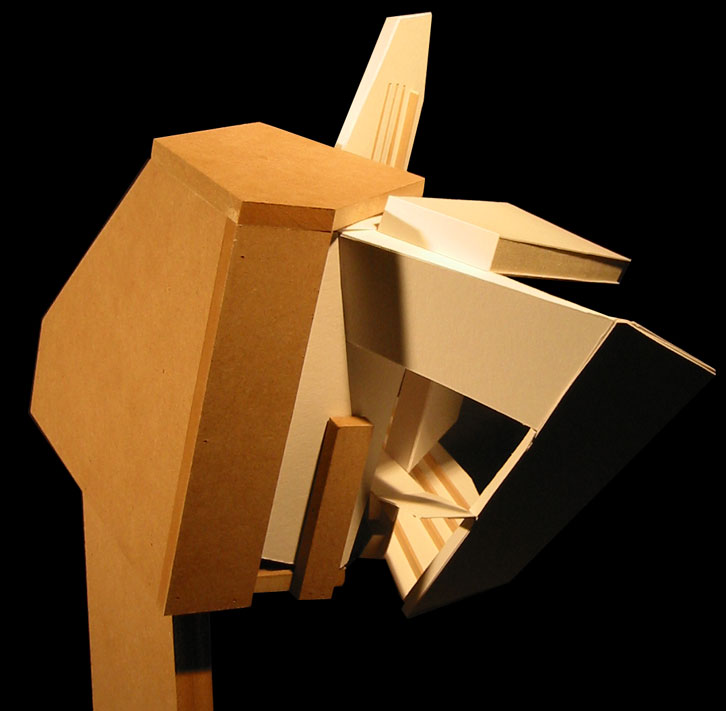
left 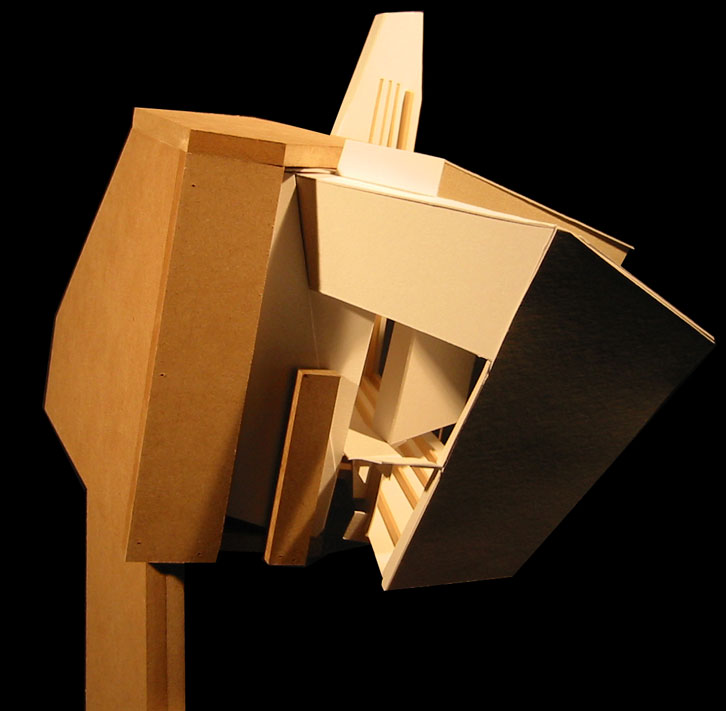
mid-left 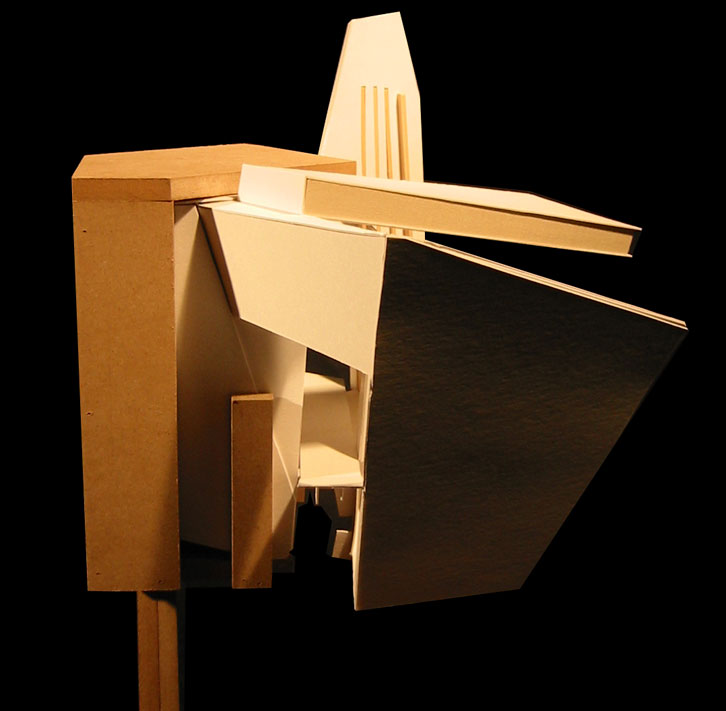
center 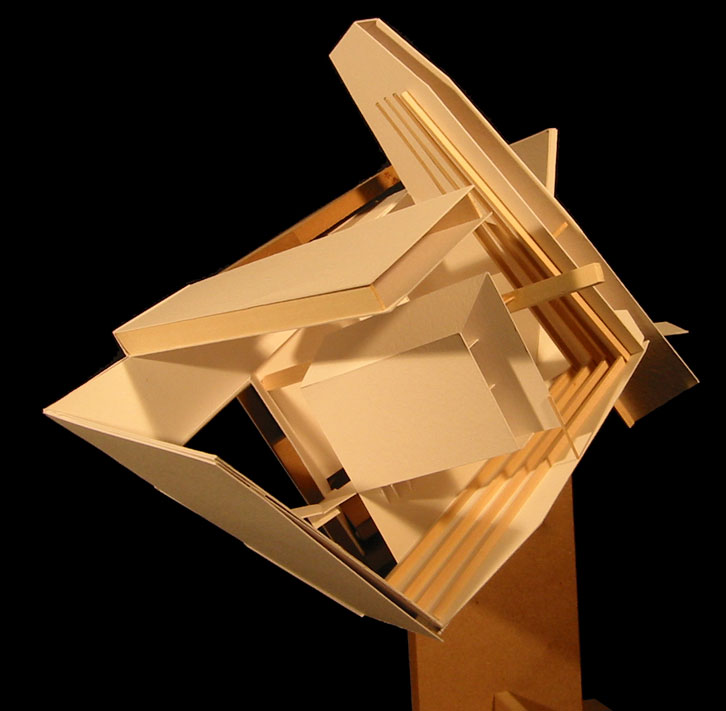
mid-right 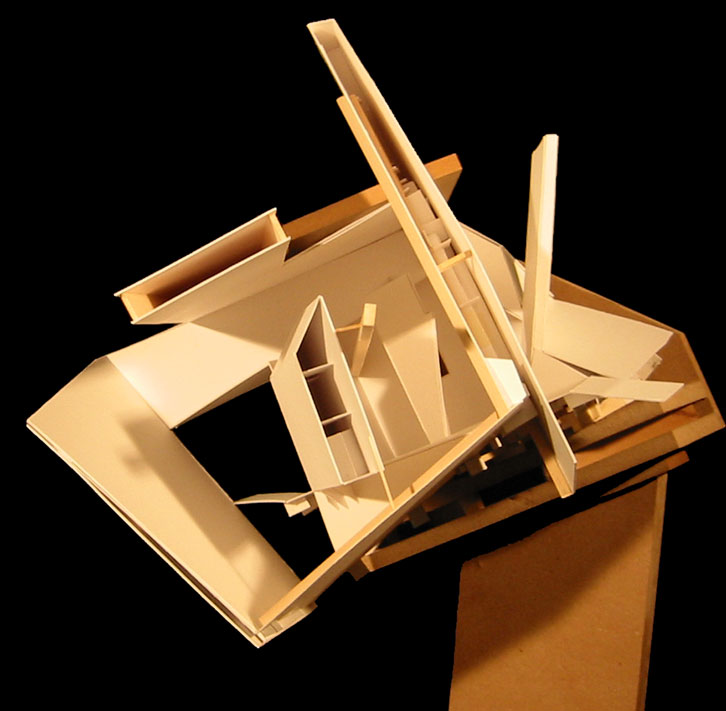
right |
 Previous Entry
Previous Entry Chalasani House
Chalasani House